
ART X SCIENCE
NOVEMBER 20-22, 2017

NOVEMBER 20-22, 2017
Regardless who we are and where we come from, autonomy is in the essence of our capacity to make decisions as individuals, organisations, and societies. In the realms of war and conflict, struggles for rights, self-achievements, and artistic and scientific explorations, autonomy is a complex and distinctive driver for the development of mankind. Throughout history it has referred to the political independence of the Greek city-states and was a predominant motivation for the European wars of religion in the 17th century. In the 18th century, Kant brought it to the centre of theoretical and practical philosophy debates. During the 19th century, the phrase “art for art's sake” reflected the Romantic movement's desire to detach art from the stress of rationalism and was the foundation for the development of abstract art in the 20th century. In the scientific world of today and tomorrow it will continue to be a major driver in the development of innovative autonomous.
Where does our autonomy as individuals, artists and researchers end and begin? Can the boundaries be drawn so neatly? How does autonomy relate to contemporary challenges and how we might face them?
More than 30 artists and researchers will be at the AHA festival to invite you to reflect, widen your perspective , explore, test and question your autonomy. Come, learn and contribute, listen and express, experience and be experienced…
seminar
Monday 09:15-10:15
The American architect and innovator Juan Frano Violich will open a discussion on how climate change, digital technology and the ever-expanding built environment are transforming the material autonomy of architecture. How can a new community of architects move beyond the use of steel, concrete and glass inherited from modernism? Violich’s work creates a new hybridity, a new mixing of ancient and contemporary construction materials, design, and digital fabrication techniques. These include the re-discovery and new deployment of ancient materials in contemporary architecture, the architectural mixing of natural, virtual and constructed 'categories' of matter, and design that minimizes the use of materials and maximizes material experience. By bridging design, research, and practice, Violich argues for agency in architecture through collaborations with local maker-communities and global skill networks.
opening speech
Monday 10:30-11:00
Opening of AHA festival with Stefan Bengtsson,
President and CEO of Chalmers University of Technology
exhibition
during the festival
Encountering exhibits a selection of architecture- and architectural thinking-led artistic research conducted in connection with Chalmers. Contributions from Anna Maria Orrù, Malgorzata Zboinska, and Jon Geib take the form of video and animation clips, publications, visuals and a physical model.
exhibition
during the festival
The Exhibition presents results from the 2-day workshop “THINK OUT OF THE BOX” organized by students at Chalmers Department of Architecture and Civil Engineering, together with Valand Academy – University of Gothenburg and Hvitfeldtska gymnasium and held on November 9th and 11th, 2017. The aim of the workshop is to identify, measure, define, design, interpret, build, and visualize the idea of “AUTONOMY” in relation to three thematic groups: economic, social and environmental sustainability. Students work builds on the contemporary knowledge and discussion within these themes, students’ experience, skills, creativity and openness to new ideas.
The outcomes of the workshop are collected and exhibited in the mobile block of shelves built by students themselves. The idea behind is “to frame” the workshop outcomes and move “freely” in the festival exhibition space. In addition students show a short film documenting activities during the workshop /link to the film: click here/.
Presentation of the student workshop: Nov.20 (Monday), 11:00-12:00
photo exhibition
during the festival
4 and a half months old
has just started to conquer the world
will be autonomous
or?
spatial design
during the festival
The scenography is composed of movable elements that will be re-configured throughout the festival - designed for interaction with performers and audience members. These sculptural components extend from architectural features within the foyer, playing with light, colour and spatial perception.
exhibition
during the festival
Cohesive Flesh embodies contradictive properties: cohesion and stretchiness.
While dormant, it is barely moving, loosely hanging from the ceiling, provoking you to enliven it...
But once awakened, its form instantly changes back and forth, fluctuating from thinness to bulkiness, abruptly transforming between the compressed and the expanded states…
workshop
Monday 11:00 - 12:00
Based on the AHA student workshop THINK OUT OF THE BOX, held on November 9th and 11th, 2017 at Chalmers, students from Chalmers Department of Architecture and Civil Engineering, Valand Academy – University of Gothenburg and Hvitfeldtska gymnasium will present their work and projects. The idea of “AUTONOMY” and the significant human impact on the Earth in relation to economic, social and environmental sustainability will be discussed by students together with invited guest: architect Juan Frano Violich, speaker at the AHA Festival, Seminar MIX MIX MAX MIN, MATERIAL AUTONOMY IN THE ANTHROPOCENE.
concert-reading
Monday 12:00-13:00
Vibrating air, pulsating bodies... Marina Cyrino (Brazil) explores the flute playing through a diversity of mistures with text, images, light, movement, theatrical elements, objects. Between interpretation, composition and improvisation, has as a main interest exploring and transforming the flute playing through a multimodal approach. Studied classical music in Brazil and Sweden (B.Mus, M.Mus). Currently a doctoral student in Musical Performance and Interpretation at the Academy of Music and Drama, University of Gothenburg. Also holds a bachelor in Psychology (UFMG, Brazil).
performance
Monday 13:00-14:30
"Opera Mecatronica" is a tandem, combining performance and lecture around an interactive artworks that combines custom-built dancing robots and novel interactive music-technologies - such as Robocygne (the robotic ballet swan), The Throat III (an interface for extending operatic vocal performance), The Pearlfishers (an audience interactive water installation) and many more.
concert
Monday 15:00-16:00
Growing up in an art-loving family Jasmin is doing Watercolor painting as well as Architecture, she is running an art gallery and… “As a kid, I remember my father was always whispering old, traditional Iranian songs for himself and encouraging me to sing with him. It became a habit for both of us and cultivated the seed of a big passion in me. Later I went to a singing Institute to test my voice and assigning to its singing class. I didn’t believe that I’ve got the top score in the test that day. So I started to go the session with a kind and professional teacher and learn more and more techniques, working to get better every day. I want to sing everywhere, whenever I’m alone or with my friends. it makes me feel very good.”
performance
Monday 16:00-17:30
What does autonomy mean when there is no such thing as standing? How do we catch sight of the stories our culture takes for ‘just how things are’? What happens when a writer runs out of words? For the past ten years, Dougald has worked with words to bring people together in the face of the ecological crises of our time. The Dark Mountain Project has been ‘changing the environmental debate in Britain and the rest of Europe’ (New York Times). Yet there comes a point where language fails. In this collaboration with the dancers Alexander Dam and Sara Rousta, the three of them seek to inhabit the torn space at the edge of language, to see what happens when the word-mind falls into the body, the ways in which we hold each other up. It is also about the role of the artist, the seductions of an idea of heroic autonomy in which the work comes from the individual genius, the figure of the lone truth-teller which Romanticism gifted to modernity. How do we walk away from that story, into a humbler relation to our work and the world in which we find ourselves? The distance is gone, now... the arm’s-length confidence, the dream of mastery... knowledge gives way to knowing... we risk being changed by what we come to know.
workshop
Monday 16:00-17:00
Bugge Wesseltoft demonstrates and talks about improvising music with technology and the fuse of realtime playing and laptops.
concert
Monday 18:30-19:30
Zsófia Boros’ guitar playing is subtle and restrained, accompanied by a melancholy grace. As the subtleness of her playing unfolds, the attentive listener perceives its quiet virtuosity. Her restraint arises quite naturally from the knowledge of her own ability to become one with her instrument and, thus, never to let virtuosity dominate the music.
concert
Monday 20:00-21:30
“There is no musician or artist in the world that is not inspired by others. However, the important thing is to let inspiration develop, to work towards finding a unique means of personal expression. This is what I believe and is what I have always tried to achieve … to find my own thing, my own voice. I don't want to be another carbon copy of any great musician, past or present: I don’t see the point of that. There have been so many good things done before, but one must find one's own sound.” Bugge Wesseltoft
seminar
Tuesday 09:00-10:00
We will start from the 1950s when this question was first asked by the pioneering British scientist Alan Turing and come to the recent announcement by Google DeepMind of their program AlphaGoZero that learned to play the game of Go all by itself within 36 hours and beat the earlier version 100-0, which itself beat the best human player comprehensively, in the process discovering new strategies that no human had seen in thousands of years of play. We will discuss implications of these developments to the question: "How will AI change your life?".
workshop
Tuesday 09:30-11:30
A Commenting State" There are several ways one can communicate thoughts, ideas and opinions through symbols and metaphors, in an attempt to say more with less. A key element in this effort is usually to look for the most direct way of communication possible, yet one still open for interpretation. This workshop invites participants to use ordinary, everyday objects (different objects and tools will be available) in order to comment on something by simply adding, removing, changing or moving an object of their choice.
seminar
Tuesday 10:00-12:00
How does the Anthropocene modulate, constrain, or even abolish autonomy? Through 20-minute presentations followed by a panel dialogue, David Chandler, Etienne Turpin and Anna-Sophie Springer will respond with perspectives from within and across their fields of international relations, philosophy, design research practice, exhibition-led inquiry, software development, curating, writing, and publishing.
workshop
Tuesday 10:00-12:00
Are any decisions truly autonomous? Perhaps autonomy can only be achieved when everyone has equal access to information. Explainartist is an exciting new web platform that connects researchers with artists in order to #shareknowledgecreatively. These collaborations generate stimulating multimedia that improve public engagement with research by deconstructing technical ideas and opening them up for wider discussion. I am The Ocean is a multi-sensory, interactive exhibit exploring the human impact on marine ecosystems. It is the product of a creative “lock-in” exercise, where University of Gothenburg marine biologist Sam Dupont, joined forces with artists Pamela Lindgren (product deign), Carolina Poelk (user interface design), Francis Löfvenholm (photography) and Ajibola Omokanye (spoken word/illustration) to identify creative ways to make his research accessible.
www.explainartist.org
interactive seminar
Tuesday 12:00-14:00
One of the most important autonomous systems we know are our own bodies However, sometimes we are depending on each other. Science helps us change the laws of nature. The RECYCLE ME project has one aim- to spread the word “Organ Donation Concerns Us All”. Learn how design solutions can be used to spread a message.
www.recycleme.life
seminar
Tuesday 13:00-14:00
A seminar speculating on how self-organisation and natural selection together can generate the astonishing complexity we see in biological systems. We reflect on creativity both at the systemic and the individual level in biological and artificial systems. What are the similarities? What are the differences?
workshop
Tuesday 14:00-16:00
Danskompaniet Spinn presents a dance workshop with everybody’s equal value as the theme. We dance in accordance with our own abilities, do creative exercises and make time for reflection. By doing so, we achieve a better understanding of both ourselves and other people. You are welcome, whoever you are.
workshop
Tuesday 14:00-16:00
A workshop by Brännö Kundaliniyoga on the philosophy behind yoga, reflecting on the situation in the world today. Theory, reflection and practice are mixed. Cushy dressing recommended, no prior knowledge needed and yoga mats available.
lecture, workshop
Tuesday 16:30-18:00
Allan’s lecture on curves and their role in engineering, the sciences and the arts will have explained how the grammar of curves can best be learned in the life drawing class. The Workshop that follows the lecture will thus include a life drawing class. This will allow participants the opportunity to look afresh at the act of drawing and the nature of curves. However, in keeping with the Festival’s theme of Autonomy, participants are under no obligation to obey the rules of grammar that Allan has described in his lecture.
seminar
Tuesday 16:15-17:45
When IBM's AI tech beat the most successful Jeopardy! champions back in 2011 it made not only headline news and Watson a household name but it also ushered in what IBM has defined as the Cognitive Era and today, AI reigns supreme on top of the Gartner hype-cycle. As AI-tech matures it moves into areas previously the privileged domain of humans. So, what are the impacts on the creative arts when the AI can create movie trailers, design haute couture, work in architecture, write pop songs and dream?
workshop
Tuesday 16:00-17:00
A poetic and experiential inquiry of interconnectivity
Intervention/open workshop
Spontaneous proposal of techniques and exercises from various artistic and somatic disciplines
seminar
Tuesday 18:00-20:00
A talk and panel discussion with Alejandro Arevena/Elemental the winner of the Gothenburg Award for Sustainable Development
2017 and winner of the Pritzker price 2016. Alejandro Aravena is an innovative Chilean Architect who, along with his colleagues in the ‘Do Tank’ firm Elemental, applies a design philosophy based on making inhabitants part of the solution instead of regarding
them as a problem – building bridges of trust between people, companies and governments.
The talk is hosted in collaboration with Open Week, the AHA Festival and Chalmers University of Technology.
ahafestival.se
gothenburgdesignfestival.se
gothenburgaward.com
Further details on the panel discussants and theme will be realised in the coming days.
Sign up to the event here: https://formogr.am/FlGN1e72Tl
performance
Tuesday 20:00-21:00
With their different backgrounds in classical music and jazz, the musicians of Tangótica opens up a blended style, still keeping the initial tango feeling. Tangótica blends dramatic tangos, fast-paced milongas and elegant waltzes from the classic Argentinian tango repertoire with composers like Osvaldo Pugliese, Carlos Gardel and Astor Piazzolla, but also their own material, which can be heard on their first album. The record was nominated for the 2013 Manifesto Prize.
Sexteto Tangótica consists of five musicians, all established names in Sweden.
Band members:
Love Nilsson - saxophones and flute
Stefan Wingefors - piano
Cecilia Hultcrantz - violin
Fredrik Bergman - contrabass
Jens Lundgren - bandoneón
Dancers - Elodie Labonne & Abdel Cuauhtli
For the AHA festival they created a special piece with two dancers to illustrate autonomy in the relationship between the musicians in the orchestra, and between the dance and the music.
performance
Tuesday 21:00-21:30
In OtoKin, an invisible sound space is explored through ear (Oto) and movement (Kinesis). With eyes closed, you enter a high-dimensional acoustic space, where every small body movement matters. Through this re-translation of three-dimensional body action and position into infinite-dimensional sound texture and timbre, you are forced to re-think and re-learn: Position as place, position as posture, posture as timbre, timbre as a bodily construction. The OtoKin sound space is also shared with other users, with added modes of presence, proximity and interaction. OtoKin is a new work, made specially for the AHA Festival. It will be shown as performance on Tuesday night, and be available as participatory experience on Wednesday morning.
seminar
Wednesday 09:00-10:00
The notation of Streamlining sends signals in many directions, and the images and interpretations the word streamlining are hence very different. Some people associate it with scientific research, others with individual artistry. One interpretation might be to understand streamlining as the dictatorial power of physical laws, while another consider it to be synonymous with “superficial styling” and everyday culture. This lecture is intended to show that the boundaries between science and everyday culture are permeable, and that science is concerned with “creating form” and that in most cases “streamlining” has an identifiable and plausible content. Most examples discussed in the lecture are from the automotive world and the outline is built on a historical evolution of streamlining.
workshop
Wednesday 09:00-12:00
In OtoKin, an invisible sound space is explored through ear (Oto) and movement (Kinesis). With eyes closed, you enter a high-dimensional acoustic space, where every small body movement matters. Through this re-translation of three-dimensional body action and position into infinite-dimensional sound texture and timbre, you are forced to re-think and re-learn: Position as place, position as posture, posture as timbre, timbre as a bodily construction. The OtoKin sound space is also shared with other users, with added modes of presence, proximity and interaction. OtoKin is a new work, made specially for the AHA Festival. It will be shown as performance on Tuesday night, and be available as participatory experience on Wednesday morning.
film screening
Wednesday 10:00-11:30
Film screening of Fabrizio Terranova’s portrait of Donna Haraway, whose groundbreaking work in science, technology, gender and trans-species relationships over the last four decades is marked by her deep commitments to feminism and environmentalism. Refusing to distinguish between humans and animals and machines, she proposed new ways of understanding our world that challenge normative structures and boundaries. Her approach to writing is equally distinct, breaking with prevailing trends in theory by embracing narrative techniques in painting a rebellious and hopeful future.
earthlysurvival.org
concert
Wednesday 12:00-13:00
Mayas explores textural, linear sound collage, and has developed a set of techniques that draw on the history of prepared and inside piano vocabulary, but are highly individualized and expand the language for internal piano music making. Alongside the piano, Mayas performs on a Clavinet/Pianet, an electric piano from the 60s with strings and metal chimes, where she engages with noise and more visceral sound material, equally extending the instrumental sound palette using extended techniques and devices.
Per-Anders Nilsson, Professor in Music and Media at Academy of Music and Drama at University of Gothenburg. Improvising musician and composer. Studied saxophone and electroacoustic music from 1981-87 at the University of Gothenburg. In 2011 Nilsson defended his doctoral thesis A Field of Possibilities, which is about designing and improvising with digital music instruments.
workshop
Wednesday 13:00-14:00
"When dance becomes a tool to better understand interactions...
How do we collaborate, listen and speak to each other? Elodie and Abdel invite you to a workshop inspired by the specific communication used between argentinian tango dancers. Broaden your understanding of yourself and of your interactions with others by developing trust in your senses and exploring new ways to communicate."
lecture
Wednesday 14:00-15:00
Alex Berman is an artist and software developer working at the intersection of art, research and technology. Through the project AI_am he investigates how dance and artificial intelligence can cross-fertilize each other. He is also Lead Developer at Talkamatic, a company developing technology for conversational interfaces.
In his presentation, Alex will discuss the risks of superintelligence in relation to his own experience of working with AI artistically. Is a creative AI also a dangerous AI? How are the risks and promises of unpredictable AI linked to each other?
http://timebend.net
workshop
Wednesday 15:00-17:00
Facefuture is a special designed workshop on how we could meet the future with an open mind. You will be offered to reflect on issues such as; where does life, art and science begin? Is there any end? You will meet musicians, professors, actors and filmmakers who all offer their personal thoughts about autonomy.
This might be the workshop that inspires you to meet the future with your innermost authentic autonomy.
seminar
Wednesday 17:30-19:00
There are some that will tell you that the world is not there to be used. Most of those same ones will seem t be of no particular use either. Let's call them poets. Oh yes? Then what is the world there for? they asked a poet. It should be loved was the answer. This lecture questions the self-importance displayed by human vision and understanding.
It seeks to allow the other-than-human world to be heard and leave enough space to wonder.
stand up
performance
Wednesday 19:00-20:30
Who is allowed to share their story? In Imagine there is room for everyone. But how can we be ourselves while co-existing with each other? Four dancers and one musician fill the stage with their personal stories. In Imagine there are no limits how far you can go to feel alive.
concert
Wednesday 20:30-22:00
A solo performance with Björn Meyer will certainly challenge many preconceived ideas about what an electric bass guitar is capable of as a solo instrument. Deep pulsating ambiences, outer-worldly sonorities, nordic inspired folksongs, archaic sounding anthems and minimal patterns, all melted into one, obvious unity.
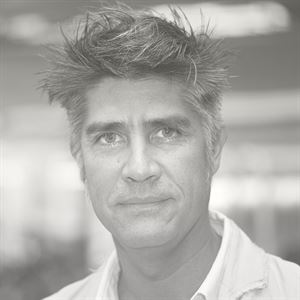
Alejandro Aravena is an innovative Chilean Architect who, along with his colleagues in the ‘Do Tank’ firm Elemental, applies a design philosophy based on making inhabitants part of the solution instead of regarding them as a problem – building bridges of trust between people, companies and governments.
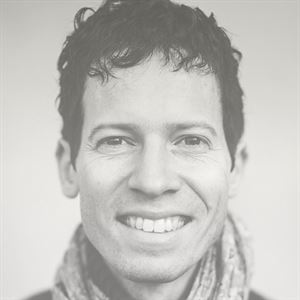
Alex Berman is an artist and software developer working at the intersection of art, research and technology. Through the project AI_am he investigates how dance and artificial intelligence can cross-fertilize each other. He is also Lead Developer at Talkamatic, a company developing technology for conversational interfaces.
In his presentation, Alex will discuss the risks of superintelligence in relation to his own experience of working with AI artistically. Is a creative AI also a dangerous AI? How are the risks and promises of unpredictable AI linked to each other?
http://timebend.net/

Alexander Dam (1989, Stockholm - SE) started dancing streetdance at age 11. Since 2006 he has performed and competed within several styles of streetdance on a professsional level, plus taught streetdance in dance school both in Sweden and abroad. He has won such competitions as Uk Bboy Championships (2009), Locking Up Moscow (2011) and Juste Debout (2012). In the year 2009 Alexander started practicing contemporary dance and have since then worked with choreographers like Mari Carrasco, Fredrik Benke Rydman and Erik Linghede. 2012-2013 he studied contemporary dance at Salzburg Experimental Academy of Dance (SEAD). 2014 he began working with swedish contemporary circus company Cirkus Cirkör and the performance Underart, directed by Olle Strandberg. The performance ended its tour in 2017 after which he was one of the dancers in Emelie Enlunds project and performance We Love Holocene, which premiered in Dansens Hus (Stockholm) in the spring of 2017.
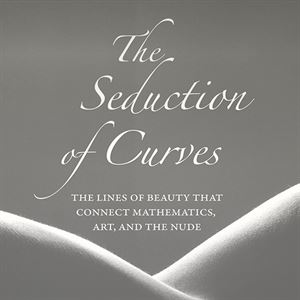
Allan McRobie is Reader in Engineering at Cambridge University where he teaches structural design and stability theory. His current research interests are focussed on graphic statics, a method for the visual representation of the forces in structures. Prior to returning to academia, Allan was a structural designer, mostly in Australia, where he was responsible for the design of many bridges and towers.

Ami Skånberg Dahlstedt is a Swedish performer, choreographer, filmmaker and writer. Ami often creates stage work (solo, and collaborative) on the basis of her embodied life story in a particular theme. Her 90 min solo performance A particular act of survival received a performing arts award at Scenkonstgalan in Sweden in 2015. In April 2017 her new solo piece The laugh of the Medusa premiered, and it was very well received. The slow walk suriashi is essential in Ami's practice, which she has studied since 2000 with her teacher Nishikawa Senrei in Kyoto, Japan. Since 2014, she walks in suriashi in different spaces. Ami also explores the various accents her dancing contains, where nihon buyō has been an important source of knowledge the last seventeen years. In March 2015, Ami was appointed coordinator, together with the visual artist Dr Lucy Lyons, for the Nordic Summer University Study Circle 7: Practicing Communities - Transformative societal strategies of artistic research. The study circle is organized through Nordic Summer University, a well-established twice-yearly symposium. Ami is a member of the Peer Review board of Journal of Artistic Research since February 2017.
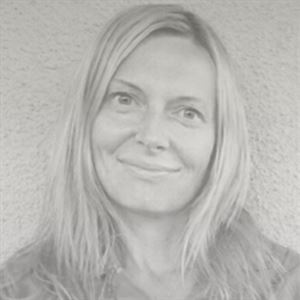
Anna is a researcher and teacher at the Department of Architecture, an urbanist with a background in architecture and city planning, practice covering a range of urban planning and design activities in mostly public settings. She believes in developing a Metalogue between society, ecology and design in an increasingly urban world, promoting integral urbanism and common concerns across disciplines met on the footing straddling both nature and culture of cities.
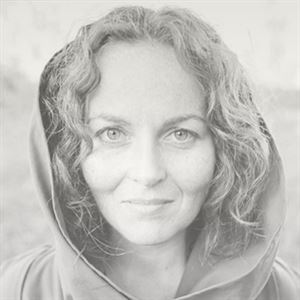
The foundation of Anna Maria Orrù’s work is embedded in biomimicry, artistic research, food and in curating performative research, providing an alternate approach to the field of ecological urbanism, architectural-thinking, art and design. She behaves as a connective tissue, working in the interstitial spaces between disciplines by bringing a variety of approaches and talents to the table to creatively tackle issues around climate change. Her projects, and PhD research at Chalmers, cover the distinct topics of bodily engagement, food resource, architecture, senses and urbanism, explored through the study of organoleptic qualities in the choreography of urban spaces. Anna Maria Orrù has been a founding catalyst in the forming and accomplishment of the AHA festival in 2014 through 2016.
www.annamariaorru.com

Anna-Sophie Springer is an independent curator, writer, and co-founding director of K. Verlag, a publishing house based in Berlin. She is co-principal investigator of Reassembling the Natural, an exhibition-led inquiry into biodiversity loss and land use transformation funded by Germany’s Kulturstiftung des Bundes, and a founding co-editor of the intercalations: paginated exhibition series, published by K. Verlag and the Haus der Kulturen der Welt in the context of Das Anthropozän Projekt. Her research-based practice merges curatorial, editorial, and artistic commitments by stimulating fluid relations among images, artifacts, and texts in order to produce new geographical, physical, and cognitive proximities, often in relation to historical archives and the book-as-exhibition.

Åsa Unander-Scharin (PhD) is a choreographer, dancer and artist-researcher. She holds a position as professor of Innovative Art and Technology at Luleå university of technology and has been member of The Committee for Artistic Research at The Swedish Research Council. Carl Unander-Scharin is a Swedish professor, Phd, operatic tenor and composer.
As a resident soloist at the Royal Swedish Opera he has sung roles such as Count Almaviva (Rossinis) Gonzalve (Ravel) and Tamino (Mozart). Together they will be "Opera Mecanotrica" at the AHA festival.

For more than thirty years, Björn — Swedish-born and Swiss-based — has shaped a unique voice for his instrument inside the most diverse contexts. He has worked alongside Persian harpist and singer Asita Hamidi and is a long term collaborator with Tunisian oud master Anouar Brahem. He has spent more than twenty years with Swedish nyckelharpa player Johan Hedin and percussionist Fredrik Gille in Bazar Blå, co-defining the sound of contemporary Swedish folk music. For more than a decade he was a member of the minimalistic, zen-funk, groove-collective Nik Bärtsch’s Ronin. Provenance was released by ECM in 2017 and is their first, in a distinguished tradition of solo bass albums, devoted to the electric bass guitar.
His solo work is concerned with the experience of sound in acoustic spaces: “Even though the instrument is technically non-acoustic, the music is deeply influenced by the properties of the space where it is played. The many different ways in which acoustics affect my compositions and improvisations have always been sources of surprise and inspiration. There is definitely a second member in this solo project – the room!”
WEB: www.bjornmeyer.com
Written:
“.. Meyer’s immersive music has a unique musical provenance that is entirely his own.” Fred Grand - Jazz Journal
“.. Meyer has taken a unique approach to composition for solo bass guitar. It is one that will move the instrument forward as much as it will move the listener emotionally.” John Marley - Jazz Views
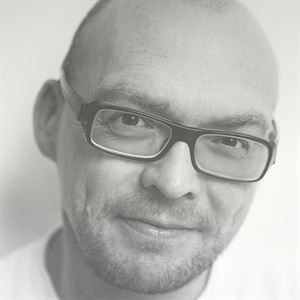
Since the early 1990´s Bugge Wesseltoft has made an impressive, truly post-modern transition from his ECM nordic jazz traditions. Playing and recording together with the likes of Jan Garbarek, Sidsel Endresen, Terje Rypdal, Nils Petter Molvaer, Jon Eberson to forming his own innovative New Conception Of Jazz group and exquisite label “Jazzland Recordings”.
Since 2004, Bugge has been developing a solo project. As you can expect from Bugge, his solo work covers a broad spectrum: from melodic piano parts to experimental and atonal music and noise (and even manages to find space to integrate a new version of a standard). Many rhythms and grooves, both primeval and modern, are looped and entwined, and often sounds are distorted and reshaped on the fly; the concerts have a strong free improvisational component.
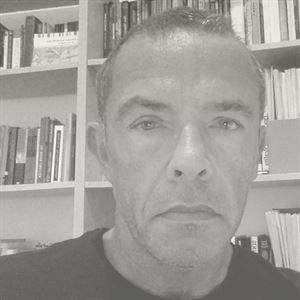
David Chandler is Professor of International Relations, University of Westminster, and founding editor of the journal Resilience: International Policies, Practices and Discourses. His most recent monographs include: Ontopolitics in the Anthropocene: An Introduction to Mapping, Sensing and Hacking (Routledge, forthcoming 2018), Peacebuilding: The Twenty Years’ Crisis: 1997-2017 (Palgrave Macmillan, 2017); The Neoliberal Subject: Resilience, Adaptation and Vulnerability (with Julian Reid) (Rowman & Littlefield, 2016) and Resilience: The Governance of Complexity (Routledge, 2014). His personal webpages can be found at: www.davidchandler.org

Delia Dumitrescu is professor in textile design at the Swedish School of Textiles. Her research explores how the textile design methodology can be translated to the related design fields, e.g, product design, interiors, and architecture. Central notions of her research are patterns and transformability. Using practice-based methodology, her research develops cross-disciplinary design methods for Smart Surfaces— interactive textile surfaces as materials for body and space. Her research projects have been exhibited in different places around Europe, e.g., Salone Satellite, Milan, Responsive by Material Sense, Berlin, Hanover and Avantex, Frankfurt, CETI (Center for European Textile Innovation), France and Keller Gallery, MIT, Cambridge (MA).
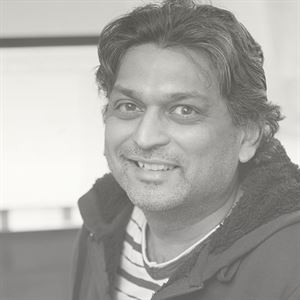
Devdatt Dubhashi is Professor in the Department of Computer Science and Engineering Chalmers, leading the machine learning group. He received his Ph.D. from Cornell University and has held positions at the Max Planck Institute for Computer Science, the University of Aarhus, and has been an expert consultant for the OECD on Data Driven Innovation.

Dougald Hine is a social thinker, writer, editor and the kickstarter of a series of organisations, including the Dark Mountain Project, which grew out of a manifesto which he wrote with Paul Kingsnorth in 2009. Since arriving in Sweden in 2012, his work has included two years as leader of artistic development at Riksteatern and roles with the Centre for Environment and Sustainable Development at Uppsala University and the Kaospilot school in Aarhus.
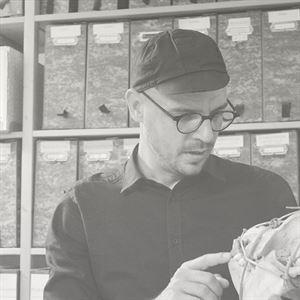
Etienne Turpin is a philosopher, Research Scientist at the Massachusetts Institute of Technology, and Founding Director of anexact office, his atelier for design research based in Jakarta and Berlin. Together with Anna-Sophie Springer, he is a co-principal investigator of Reassembling the Natural. He is also a founding co-director of User Group Inc. LLP, a London-based, worker-owned cooperative building software for disaster response, emergency coordination, and environmental monitoring. Dr. Turpin is the co-editor of Fantasies of the Library (MIT Press, 2016), Art in the Anthropocene (Open Humanities Press, 2015), and Jakarta: Architecture + Adaptation (Universitas Indonesia Press, 2013), and editor of Architecture in the Anthropocene (Open Humanities Press, 2013).
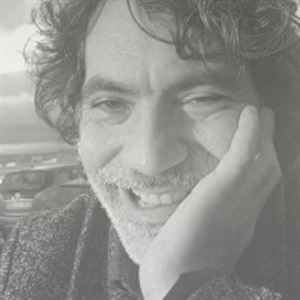
Fabrizio Terranova (b. 1971, Italy) is a filmmaker, activist, dramaturge and teacher at École de recherche graphique in Brussels, where he launched and co-runs the Master programme in Narration and Experimentation/Speculative Narration. He is also co-founder of Simili-Théâtre and a founding member of DingDingDong, an institute dedicated to raising awareness around Huntington’s disease. His 2010 experimental documentary film Josée Andrei: An Insane Portrait screened internationally and was adapted into a book published by Les Éditions du souffle. Terranova recently published the article ‘Les Enfants du compost’ in Gestes spéculatifs (Les Presses du réel, 2015).

Fredrik Norén is a visual artist based in Malmö/Lund. His work comments our times, our view on life and the way we choose to categorize our environment. By dissolving the most well-known and commonly occurring from our close environment, he performs a gentle scraping on the surface of a conception of the world we normally perceive as evident. By working through deformation he makes new things appear, that have yet to receive a function or role. New qualities have emerged at the expense of old ones and the objects can, in their new undefined states, be perceived as both better and worse than before. His body of work often deals with patterns within production industry and consumer habits and thereby allows the works to act as contemporary symbols of a time when broken objects around us have increased in numbers.

Growing up in an art-loving family Jasmin is doing Watercolor painting as well as Architecture, she is running an art gallery and… “As a kid, I remember my father was always whispering old, traditional Iranian songs for himself and encouraging me to sing with him. It became a habit for both of us and cultivated the seed of a big passion in me. Later I went to a singing Institute to test my voice and assigning to its singing class. I didn’t believe that I’ve got the top score in the test that day. So I started to go the session with a kind and professional teacher and learn more and more techniques, working to get better every day. I want to sing everywhere, whenever I’m alone or with my friends. it makes me feel very good."
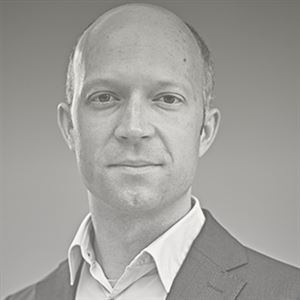
Jon Geib is an urbanist and architect whose doctoral research at Chalmers investigates how design methods can engage the city dialogically through multiple parallel and intersecting perspectives, including the foregrounding of nonhuman agents. As a Research Fellow in the EU Marie Curie project TRADERS, he explored, through an artistic research approach and collaboration with the Gothenburg Cultural Department, artistic-cultural framings of dialogue and participation underscoring their dynamics and ambivalences, especially those related to the designer's role(s) when choosing to work with and within institutions in a post-Fordist context.

Juan Frano Violich has developed an interdisciplinary design practice which engages material fabrication, digital technology and the conservation of natural resources to expand the public life of buildings and cities. Recent work at KVA Matx includes a new public Ferry Terminal in New York City; a restoration and urban design plan for 8 kilometers of the Mississippi River in Minneapolis, Minnesota; and a carbon neutral work/live residential development in Hamburg, Germany. KVA’s material research division Matx has worked with business leaders, cultural institutions and public agencies to design and build resilient soft infrastructure for networked cities in the US, Germany, and France and urbanizing global regions in Brazil, Mexico, Australia, India, and Africa.
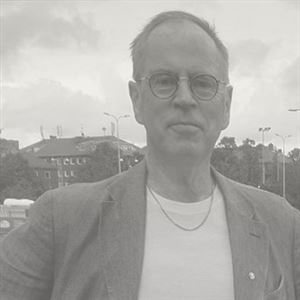
Lennart Löfdahl is Professor in Fluid Dynamics at Chalmers University of Technology, and has during the last fifteen years devoted most of his research to the field of Road Vehicle Aerodynamics and Thermal Management. Main theme of the works is on the reduction of fuel consumption and emissions for a sustainable society, and in the research works advanced experimental technology as well as CFD methods for flow field optimizations are key issues.

Lars Schmidt might be described as a sort of modern day drop out. He is a nature lover. Some say he is a poet. He grew up in a small village, spending most of his time outside. Since then he has been wearing many hats. He has worked as ice-cream vendor, truck driver, actor for film and television, barman, kitchenhelp, acting coach, theater director, tango teacher, gardener and landscaper, filmmaker, model, shepherds help, musician and singer, meditation instructor, doorman or photographer... International conferences with academics and politicians, club or contemporary art scenes, life on organic farms, collaborations with movie stars, or times at the military are parts of his pathway.
In short: He has made the round enough to experience the absurdity of modern civilized life and at some point he had to leave (which in itself surely isn't less absurd.)
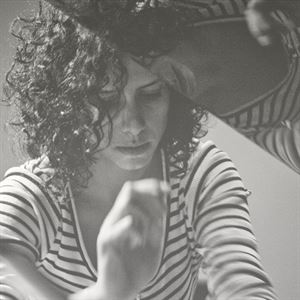
Magda Mayas, born 1979, is a pianist living in Berlin. Over the past 20 years she developed a vocabulary utilizing both the inside as well as the exterior parts of the piano, using amplification, preparations and objects that become extensions of the instrument itself. Mayas explores textural, linear sound collage, and has developed a set of techniques that draw on the history of prepared and inside piano vocabulary, but are highly individualized and expand the language for internal piano music making. Alongside the piano, Mayas performs on a Clavinet/Pianet, an electric piano from the 60s with strings and metal chimes, where she engages with noise and more visceral sound material, equally extending the instrumental sound palette using extended techniques and devices.
www.magdamayas.com
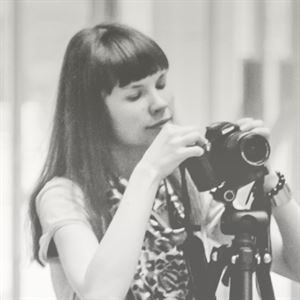
Malgorzata Zboinska, PhD, is an architect, designer and researcher. She is interested in the artistic consequences of involving computer-driven technologies in the processes of creation. She investigates these issues in an exploratory and design experiment-based manner. She employs digital techniques such as free-form modeling, animation, computational, parametric and generative techniques, rapid and interactive prototyping, and digital fabrication, and works with a wide range of design representations: animations, digital artifacts, physical models, interactive prototypes, full-size architectural pavilions and artistic installations. Her most recent artistic research project, The Architectural Convertibles, explores the notion of Thick Interactive Architectural Flesh, taking a closer look at the processes of Flesh creation, embodiment, spatial embedding and domestication with the aid of the digital media.
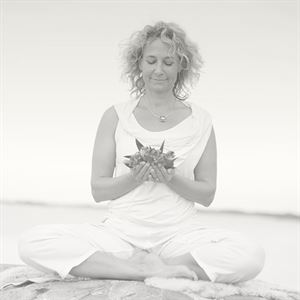
Maria Mebius Schröder is an internationally certified teacher in yoga and meditation. Brännö Kundaliniyoga was established in 2013 and gives courses and retreats all year. Maria is also a professional dancer/improvisor and has through her career practiced different traditions within yoga. Based on her deep knowledge on the human body and the potential to unlock energy through movement, she give an extra dimension to the practice of yoga. Maria is also an internationally certified coach, working with the development of creativity and leadership.
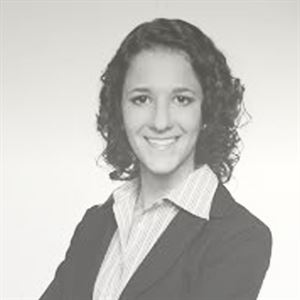
Marina Cyrino (Brazil) explores the flute playing through a diversity of mistures with text, images, light, movement, theatrical elements, objects. Between interpretation, composition and improvisation, has as a main interest exploring and transforming the flute playing through a multimodal approach. Studied classical music in Brazil and Sweden (B.Mus, M.Mus). Currently a doctoral student in Musical Performance and Interpretation at the Academy of Music and Drama, University of Gothenburg. Also holds a bachelor in Psychology (UFMG, Brazil).
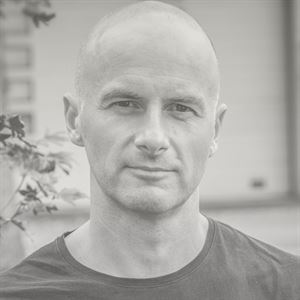
Martin Nilsson Jacobi is professor in Complex systems. He has a background in physics but has spent is research career working on questions in biology, chemistry and physics, typically focusing on questions related to self-organisation, evolution and hierarchical organisation in dynamical systems. A passionate interest for how complexity emerges and is controlled in natural systems has always been a driving force in his research.

Mikael Kågebäck is a part of the machine learning group at the Department of Computer Science and Engineering Chalmers. He received his MSc in Engineering Physics and Licentiate of Technology from Chalmers University and is currently pursuing a PhD in Computer Science with a special interest in Deep Learning and Artificial Intelligence.
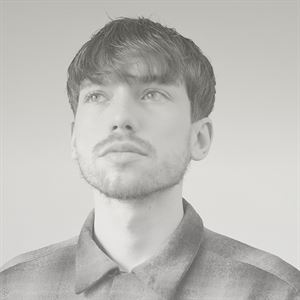
Nathan Clydesdale is a designer, researcher and educator. Originally from Scotland, he first studied Product Design at Glasgow School of Art, before pursuing his master’s degree in Child Culture Design at Högskolan för Design och Konsthantverk, Gothenburg. Nathan’s professional practice encompasses the conception of creative workshop models, and the design of furniture and props to function within participatory exhibitions. Within these contexts, he creates objects to mediate choreographed social scenarios, or tools to facilitate individual and collective creative expression. Nathan currently maintains an independent design practice between Sweden and the UK.

Palle Dahlstedt is a composer, improviser and researcher from Sweden, working in the borderland of advanced technology and art. He grew up in Stockholm, studied instrumental and electronic composition at the music academies of Malmö and Gothenburg, and did a PhD on evolutionary algorithms for contemporary composers at Chalmers University of Technology, Gothenburg. His music, ranging from chamber music and orchestral works to interactive computer installations, has been performed on six continents, and awarded several international prizes (e.g., Gaudeamus Prize 2001). As an improviser, he performs on piano and/or custom electronics, and has toured and performed all over the world with, e.g., AMM, Gino Robair, Stephen Nachmanovitch, and his own duo pantoMorf. He has also composed music for over 35 dance and theatre productions for, e.g., EnsembleTeatern, Göteborgs Stadsteater, Malmö Dramatiska Teater, E=mc2/Gun Lund och Ami Skånberg Dahlstedt. In his artistic research, funded by the Swedish Research Council, he develops new technologies and interaction models for electronic improvisation and composition, and studies computer models of artistic creativity. Dahlstedt is currently Obel Professor in Art & Technology at Aalborg University, and Associate Professor/Docent in Computer-Aided Creativity at University of Gothenburg & Chalmers University of Technology, and lecturer in electronic music composition at the Academy of Music and Drama, Gothenburg.

Pamela Lindgren is engaged in research and design as well as art. She has a Master of Fine Arts Degree from HDK and is a PhD candidate at the division of Design & Human Factors, Department of Industrial and Materials Science at Chalmers. Pamela´s research aims to increase knowledge of user experience, user acceptance and adoption of products based on aesthetic and emotional values. Pamela seeks to create an interplay between technology, construction and the human body. She is driven by passion and curiosity, in her free time she is involved in sustainability projects.

Patrick Couch works as a business developer at IBM focusing on Artificial Intelligence, Cognitive Technologies and IBM Watson. Patrick wrote his master thesis on human/machine boundary blurring and pursued a PhD until he went on a sabbatical in the late 90s which landed him in the hey day of the internet start-up scene in Stockholm when the economy was new and .com was booming. He's been with IBM since 2010 and is still on his sabbatical...
IBM Blog: https://www.ibm.com/blogs/think/se-sv/author/patrickcouch/
LinkedIn: se.linkedin.com/in/couchpatrick/
Twitter: @couch_patrick
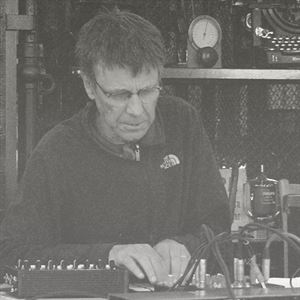
Per Anders Nilsson, born 1954 plays live electronics and lives in the Gothenburg area. Professor in Music and Media at Academy of Music and Drama at University of Gothenburg. Improvising musician and composer. Studied saxophone and electroacoustic music from 1981-87 at the University of Gothenburg. In 2011 Nilsson defended his doctoral thesis A Field of Possibilities, which is about designing and improvising with digital music instruments. Nilsson and Palle Dahlstedt are currently running the research project “Systemic Improvisation” supported by the Swedish Research Council. In the 70s and 80s he managed his own bands as well performed occasionally with artists such as Willem Breuker, Antony Braxton, and Karin Krog . In 2009 Nilsson toured Sweden with the legendary saxophone player Evan Parker. In 2014 duo pantoMorf with Palle Dahlstedt toured with British group AMM in Sweden.
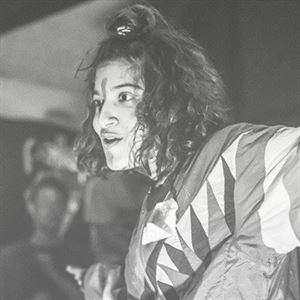
In 2010, at the age of twelve, Sara Rousta was introduced to the Urban Dance culture in which she has competed and performed with several street-styles during the years. This was an experience which brought about her first on-stage performance, Challenge, that premiered in The Göteborg Opera 2013, where she worked with the choreographers Guido markowitz and Daniela Rodrigues Romero. Since 2016 she has been working as a dancer in Emelie Enlund projects, the We Love Holocene-series which had their first premier in the spring of 2017 in Dansens Hus.

Danskompaniet Spinn is an international dance company with dancers with and without disabilities. We are passionate about dance and about challenging stereotypes about what dance is and can be. It’s about different bodies and new ways of creating and presenting dance. In our world, everybody is welcome. It’s not about the number of pirouettes you can do, but what you express with the pirouette you do. Spinn was founded 2010 by Artistic Director Veera Suvalo Grimberg and is based in Gothenburg. We work with Swedish and international choreographers and composers, create bigger and smaller productions and give workshops and lectures.

With their different backgrounds in classical music and jazz, the musicians of Tangótica opens up a bleneded style, still keeping the initial tango feeling. Tangótica blends dramatic tangos, fast-paced milongas and elegant waltzes from the classic Argentinian tango repertoire with composers like Osvaldo Pugliese, Carlos Gardel and Astor Piazzolla, but also their own material, which can be heard on their first album. The record was nominated for the 2013 Manifesto Prize.
Sexteto Tangótica consists of five musicians, all established names in Sweden.

Zsófia Boros’ guitar playing is subtle and restrained, accompanied by a melancholy grace. As the subtleness of her playing unfolds, the attentive listener perceives its quiet virtuosity. Her restraint arises quite naturally from the knowledge of her own ability to become one with her instrument and, thus, never to let virtuosity dominate the music. Zsófia Boros’ melancholy is sweet, bitter-sweet; her performance sharpens our concentration and awareness and its vibrations create a tender feeling of happiness. By ECM New Series Zsófia Boros has found a new home.

Peter Wanselius is an actor and director who has worked as an organizational consultant, coach and educator since 15 years. His primary focus is to coach leaders and management teams in order to help them connect strategy with structure, leadership and corporate culture so that they may successfully reach their goals. Peter´s way of working is characterized by commitment, humour and support. He mixes theory with concrete tools, role-playing and interactive exercises. The workshops of Peter tend to touch and open up for vital issues as well as entertain and remain as an positive and joyful experience.
Louise Wanselius is a Swedish singer-songwriter, musician and music pedagogue. With voice, guitar and violin she performs with her music and lyrics which receives great appreciation at festivals, concerts, performances and work-shops in Sweden and around the world. In 2018 she will release her next solo album. Louise's music and lyrics are humble questions on the essence of life. The songs open up for reflection around our hope, doubt, dreams and true presence in the meeting with ourselves and our surroundings.
Hans Wikkelsö is a songwriter and filmmaker who combines moving pictures with self-written music, aimed to touch different senses and focusing on specific topics. In recent years, he has delivered productions to customers and organizations such as Göteborgsvarvet, SKL, Team Rynkeby, Solheim Cup, Jontefonden among others. He has also written popular music to artists around the world who topped the lists in several European countries, for example Germany, Switzerland and Austria.
The AHA! festival explores encounters between art and science during a two-day event at the Chalmers University of Technology, supported by the Departments of Architecture and Civil Engineering, Physics, Microtechnology and Nanoscience, Industrial and Materials Science and Communication and Learning in Science, and Health Engineering Area of Advance. It is an international festival intended to provide a stage for enlightening and surprising experiences, staging surprises, new thoughts and displaced perspectives that lead to alternative modes of thinking about exploring the world through art and science. We invite scientists (physicists, historians, astronomers, engineers), artists (dancers, musicians, painters, poets, acrobats) who reside in these borderlands and wish to share their vision and work.
The relation between science and art has become more complex, but is just as important to attend to. Their meeting is still that of theory and practice, but also something more: a meeting of causal connections and meaningful coherences, of given conditions and unsuspected possibilities, of the order of things and our own place within it.
Today, ”science” no longer refers to systematic knowledge, but rather to a highly professionalised, specialised and often technically advanced activity intended for the production of empirically secure facts. Similarly, ”art” is no longer a methodical ability, but rather a complex and autonomous activity comparable to science: the creation of images, sounds, and other forms of sensuous experience with a most immediate effect. Forms that grab hold, shake up, leave us at a loss. Experiences that make us question ourselves and the world around us.
By bringing together science and art, architecture has provided an ideal playing field for such a confrontation for the first two festival in 2014 and 2015. In 2014, October 21–23, the first festival investigated the theme ‘embodiment.’ In 2015, November 2-4 the festival explored numbers, an underlying element in our lives. In year 2016 the festival was a joint voyage between the Departments of Architecture and Department of Physics to explore the theme ‘uni-verse,’ the fabric of life. All festivals offer three days of seminars, workshops, conversations, exhibitions, concerts, performances, and mingles, through thought-provoking experiences, hands-on surprises, itinerant perspectives, and savoury ideas. The festival welcomes students and researchers from all universities, and the general public, to turn the searchlight onto the relation between two different– but equally important – human activities; ’Science and art.’
The AHA! festivals main location is in the Volvo foyer (Volvofoajén) on the second floor of the student union building, at Chalmers Campus Johanneberg.
Click Here to open directions to the Volvo foyer on your phone
Chalmers Conference Centre
Chalmersplatsen 1
412 58 , Göteborg, Sweden
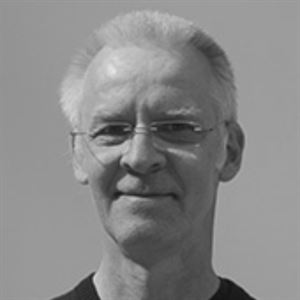
Peter Christensson
Peter Christensson is project leader for the AHA!festival and sculpturer. Christensson is lecturer in Architecture and Engineering, at the department of archtecture and civil engineering.
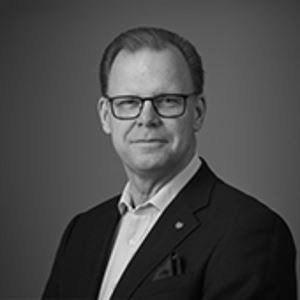
Michael Eriksson
Michael Eriksson är koordinator vid enheten för Extern samverkan, forskning- och innovationsstöd, och har arbetat med AHA!festivalen sedan år 2016.
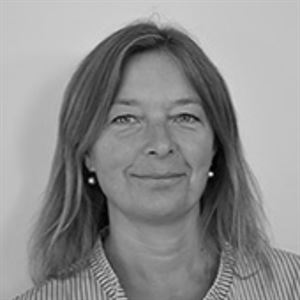
Sanna Dahlman
Sanna Dahlman är Produktdesigner MFA och är anställd som konstnärlig lärare på avdelningen för Design & Human Factors, IMS, Chalmers. Sanna undervisar på programmen Teknisk Design och Design och Produktutveckling.
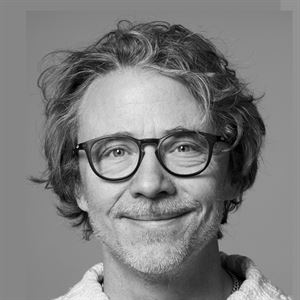
Fredrik Höök
Fredrik Höök is a professor of nano and biophysics, researching and teaching in biological and medical physics. His special interest is sensors for use in diagnostics and drug development, but also how biological sensors give us our senses.

Joar Svanvik
Joar Svanvik, MD, PhD, a surgery professor em. in Sweden has served at Sahlgrenska Hospital in Gothenburg, University Hospital in Linkoping and also at UCSF in SanFrancisco and in South Africa and is now active part time at the Transplantation Center, Gothenburg.
Contact
Contact the AHA! team at info@ahafestival.se
Courtesy of Chalmers University of Technology
Web production: Sebastian Christensson
Logo: Thomas Asplund